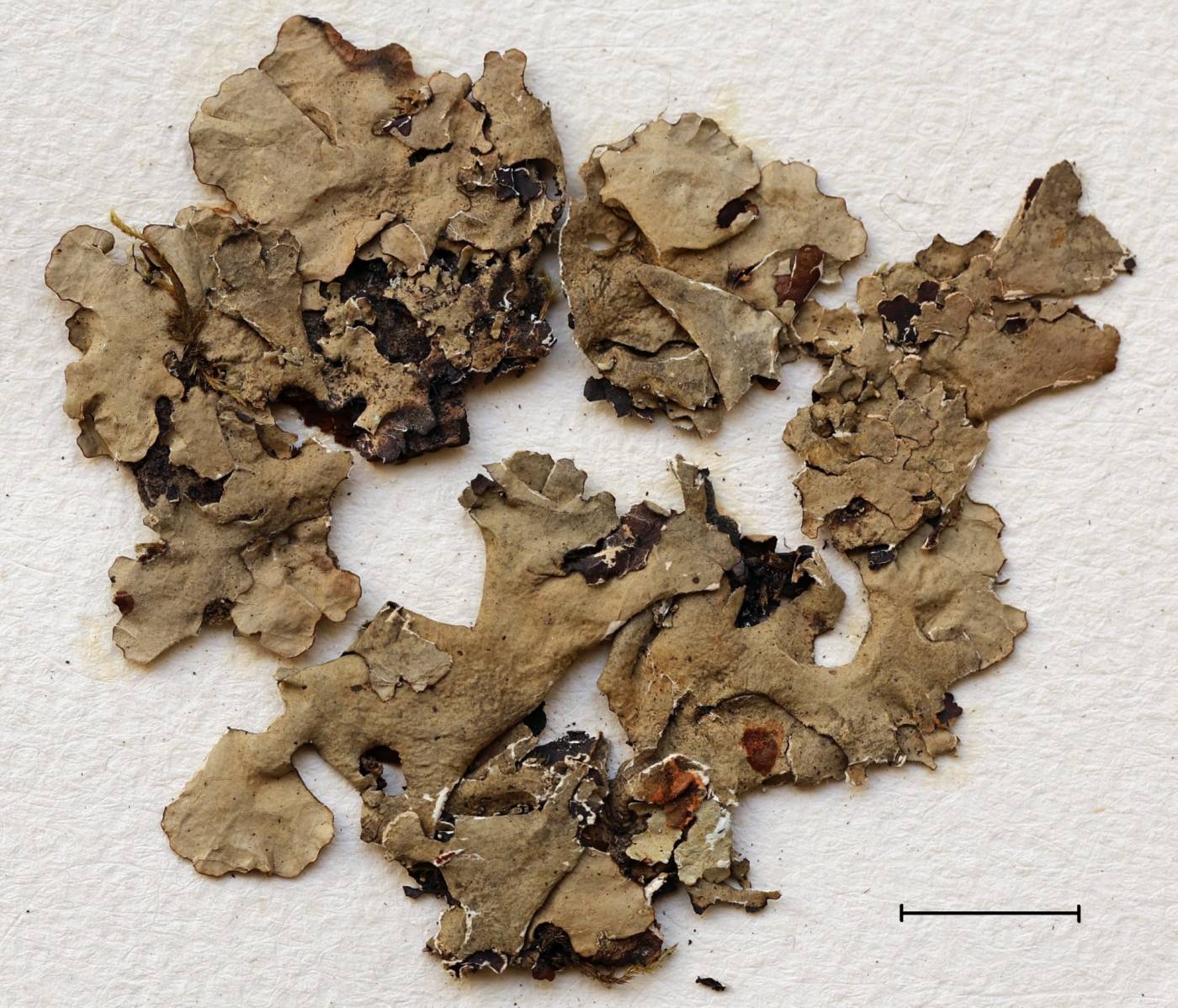The species is quite similar to the more common P. perlatum, but differs in the merged soralia and the content of salazinic acid in medulla (K+ yellow and later red reaction). It grows in open well-lit deciduous forests, especially on old trees but also on moss-covered rocks, from lowlands to mountain foothills. Its distribution in Europe is temperate to subatlantic, therefore it is rare in central Europe. The lichen was recorded in the Czech Republic only once, historically, on an aspen tree in the Horní Zahrada forest near Kroměříž (Suza 1926, Šoun 2023). Currently, it is considered extinct in the country.
Literature: Suza J. (1926): Lichenes Slovakiae II. (Ad distributionem geographicam adnotionum). – Acta Botanica Bohemica, Praha, 4/5: 3–20. Šoun J. (2023): Revize historických položek rodu Parmotrema z území ČR uložených v herbáři PRM. – Bryonora 72: 23–33.
taxonomic classification:Ascomycota → Lecanoromycetes → Lecanorales → Parmeliaceae → Parmotrema
Red List (Liška & Palice 2010):RE – extinct
Red List (Malíček 2023):A – no recent data
Occurrence in the Czech Republic
All records: 1, confirmed 1. One click on a selected square displays particular record(s), including their source(s).
